Spanish News Today Editors Roundup Weekly Bulletin Nov 1
IN DETAIL: Spain’s deadliest storm for a century
They’re calling it the worst storm of the century for Spain.
Of course, it’s not unusual to have rains in October; the Mediterranean coast is used to it. But even the most alarmist predictions for what would happen this week fell short of the reality, which has left at least 202 people dead at the last official count, at the time of writing. The number of those left destitute, homeless or otherwise had their property affected could number in the tens of thousands.
And it comes at the same time as Halloween, or more importantly the
Día de Todos los Santos festivo which is a day off every November 1. It was supposed to be a chance for one of those dreamy long weekends, but instead it has turned into a nightmare for many. The holiday dedicated to remembering the dead takes on added poignance this year.
Here’s how the tragedy unfolded.
The storm of the century
On Monday, the weather forecast was already warning of heavy rains and wind, and the northern part of the Valencian Community – the provinces of Valencia and Castellón – was issued a red weather warning, the highest possible from the State Meteorological Agency (Aemet).
The Valencian Community, which was the hardest-hit area, became a sombre focal point in a disaster that has been confirmed to have claimed over 200 lives, though that death toll has been rising steadily all week.
In towns like Paiporta, Torrent and Picaña, emergency workers are still combing through the wreckage left by the deluge, while neighbouring communities have joined in the search for the missing.
Tragedies have multiplied, with entire families perishing in flash floods – children and all – whole towns submerged and the lives of countless residents turned upside down as search and rescue teams work round the clock.
There have been so many stories of heroism, of both professional rescuers and ordinary people saving the lives of their families, of strangers, of stranded animals. Thousands of volunteers have turned up to the affected areas to lend a hand, giving out supplies, helping to clean up and shift debris, but the authorities are worried that if there is not a coordinated effort then these good Samaritans could end up getting in the way of official search, rescue and relief operations, so they are considering taking measures to stop people from going.
But sadly there are also many stories of loss and of heartbreak. At least 50 people have been arrested for looting, taking advantage of the chaos and other people’s loss to fill their own pockets.
And it wasn’t just in Valencia. In Málaga, a
71-year-old British man died after suffering from hypothermia and cardiac issues following a rescue from his flooded home in the town of Alhaurín de la Torre.
Alongside this tragic loss, a powerful electrical storm interrupted flights at Málaga Airport, where a lightning strike
disabled the control tower’s communications system. Hundreds of flights were disrupted, as the lightning event marked just one incident amid a downpour that brought over 26,000 lightning bolts across Málaga’s skies.
The impact stretched beyond the air, with severe weather warnings issued across multiple regions and emergency services staying on high alert to prevent further casualties.
The storm shifted its wrath northward and westward for a time, targeting Catalonia, Aragón, Navarra and parts of Castilla y León. The State Meteorological Agency (Aemet) has issued over a hundred alerts, covering areas from Barcelona’s coast to the Ebro River basin and right down to Andalucía’s coastal regions.
While Murcia largely
escaped the worst of the DANA’s wrath, the storm still brought significant rainfall to the region, particularly in northern areas like Moratalla and Caravaca de la Cruz.
Roads were closed,
schools put down their shutters as a preventive measure and in some towns the rising waters prompted emergency evacuations. The La Risca reservoir threatened to overflow, leading to precautionary evacuations, though water levels eventually subsided. The region’s rural communities responded quickly to support each other, demonstrating the resilience and solidarity typical of such crises.
Despite the storm passing over Murcia without leaving total devastation, its aftermath has highlighted another issue long plaguing the region:
runoff into the Mar Menor, a lagoon already at ecological risk.
Rainwater from nearby agricultural lands has once again washed sediment and pollutants into the Mar Menor, prompting fresh calls for improved flood prevention measures. Local authorities have stressed the need to divert excess rainwater for agricultural use, arguing that the current system only heightens the environmental toll on the Mar Menor.
At the same time, Murcia’s community has mobilised to support neighbouring Valencia, dispatching two helicopters to assist in rescue efforts where flooding has left entire towns isolated.
Roads and rail services down
The ripple effects of the storm’s ferocity are being felt across all
modes of transport, especially in and around Valencia. The city’s airport virtually shut down on Tuesday after flooding transformed it into what some have described as an unplanned swimming pool, with flight cancellations rippling through Spain’s broader travel network.
On the ground, train lines and roads were cut off, with cars and lorries abandoned on the highways. In a bid to keep stranded travellers safe, Madrid, Valencia and Cuenca train stations have remained open overnight, offering shelter to those with nowhere to go.
Adif, Spain’s state railways manager, has suspended all long- and medium-distance trains on the crucial Valencia-Alicante-Murcia line. The high-speed route connecting Valencia and Madrid remains closed indefinitely, at least until the end of the weekend, but transport officials are yet to confirm when full services can resume.
Numerous roads remain closed across Valencia and Castellón, with heavy vehicles brought to a halt on major routes, while people throughout the area are being asked to stay off the roads where there is a risk of damage to the roadway, landslides or more flash flooding.
There are also many road closures in Castilla-La Mancha, Tarragona, across much of western Andalucía and in Aragón.
It’s important to be aware of the latest traffic, road and travel news if you plan to move at all, and you can follow all the
updates live in real time from the DGT.
3 days’ mourning
Responding to the growing devastation, Spain’s Prime Minister Pedro Sánchez addressed the nation with a call for vigilance and compassion.
“The whole of Spain cries with the affected communities,” he said, pledging government support and coordination with the EU to aid those impacted.
Urging people to avoid unnecessary travel and exercise caution near rivers and ravines, Sánchez also expressed his gratitude to the thousands of firefighters, emergency responders and volunteers who are risking their lives in the ongoing rescue operations.
He has also announced that 250 million euros in aid has already been promised to those affected by the DANA, to help rescue and rebuilding efforts.
In addition, the Spanish government has declared
three days of national mourning, which coincides with Halloween and the All Saints’ Day weekend, leading to the cancellation of events and gatherings across the country.
But why was this storm so bad in Valencia? What was the peculiar mix of factors that combined to turn this DANA into one of the worst natural disasters the country has ever seen?
Why the DANA was so bad
Well,
the science-y part behind this deadly storm reveals just how volatile weather systems can be, especially as climate change continues to affect our planet.
Meteorologists explain that DANA phenomena occur when a polar jet stream moves southward, carrying freezing air from the north into the warmer, humid conditions over the Mediterranean Sea. This collision leads to deep atmospheric instability, resulting in violent rainfall and thunderstorms.
Now, though, this is being made worse by the fact that the Mediterranean Sea is unusually warm. Sitting at around 21°C (approximately 1.5 degrees above normal), this further exacerbated the storm’s impact.
Such conditions allow the humid air to rise, creating heavy precipitation, while Valencia’s mountainous terrain only served to amplify the effect, forcing the moist winds upward, where they cool quickly and drop extreme amounts of rain over pre-coastal and interior areas.
Too little, too late?
But it’s not just the geophysical aspects that made the destruction wrought by this storm so bad. All this also happened partly due to the fact that the alert was issued too late by text message by the emergency authorities.
Serious questions have been raised about the adequacy of Spain’s emergency response, prompting government officials to investigate whether earlier warnings might have mitigated some of the damage.
People were only sent text messages warning them to take cover and not go out and about when the rivers were already breaking their banks. Far too late, although anyone looking out the window at the lashing rains should probably have been stopped from going out by their own common sense, and not need an official alert to tell them so.
There is, of course, always practical advice available for staying safe, from avoiding high ground to steering clear of trees and metal objects during lightning storms, and, of course, remaining indoors with doors and windows shut. Experts also recommend unplugging electrical appliances during electrical storms, and following official updates closely for the latest information.
Extremes of weather
With a persistent lack of rainfall over the last 6 months, these areas have seen vast sections of their forests dry up and die off. Between 3 and 6.5% of the tree mass in these regions has already been lost, with further devastation looming.
The regions’ governments have come together to tackle this crisis, forming a working group and lobbying the European Union for emergency funding to restore the forests and improve drought resilience.
So, yes, it has rained but that’s not exactly good for the trees or indeed the crops. Imagine not watering your houseplants for six months then suddenly dunking them in the bath. Not exactly what they need to thrive.
The rains did, however, manage to somewhat fill up the depleted reservoirs in this drought-stricken part of Spain.
From drought to flash flooding; from one of the hottest summers on record to one of the worst storms ever; it’s evident to anyone who cares to look that these extreme weather events are only becoming more extreme and more frequent.
This is the real human cost of climate change. More preventive measures are essential. This area of Spain can no longer bury its collective head in the sand, falling back on outdated tropes of ‘sunny Spain’.
Flash flooding is a reality in this part of the country, and more money must be used from the regional and municipal coffers to go towards the cleaning out of ramblas (the watercourses that are supposed to divert water away from urban centres) and ensuring proper drainage should be among the top priorities for every town, city and regional government because it is clear that we are far from adequately prepared for this level of devastation.
There is a repeated and costly failure to adapt infrastructure to withstand such events, and if we cannot adapt to climate change the destruction will only get worse each time.
As the nation mourns and begins to grapple with the aftereffects of the tragedy, it is clear we desperately need a reevaluation of Spain’s approach to climate resilience. The coming weeks will be critical as Spain balances the immediate needs of recovery, but in the longer term it is not only prudent but vital to contend with the pressing demands of future-proofing communities against an increasingly unpredictable climate and volatile weather systems. This is not the end, but should be the start of a new chapter.
Where to donate
Murcia
After the blow dealt to air travel by Covid-19, these smaller hubs are struggling to recapture their pre-pandemic levels. The idea, then, is to offer hefty discounts to airlines that up their passenger numbers and add flights on non-overlapping routes, making the prospect of flying through smaller airports more attractive for airlines looking to expand.
Regional airports like Murcia, along with others such as Almería and Vigo, will see 100% discounts on security and PRM (Passenger with Reduced Mobility) fees for extra passengers in the 2025-26 seasons, potentially saving airlines around 70% of the additional cost per flight.
Meanwhile, larger airports are being incentivised to establish routes to Asia, all part of an ambitious push by Aena to bring back the traffic and economic boosts smaller regions have been missing.
At the same time, though, the airport finds itself still
embroiled in the midst of a name change debate that’s almost as turbulent as the skies have been lately. The High Court has recently halted long-standing plans to rename the airport after Juan de la Cierva, the engineer and inventor associated with the autogyro.
The Murcia government went ahead and did it a few years ago, but if you remember the central government in Madrid overruled them and said it was illegal due to allegations about De la Cierva’s links to Franco’s military uprising. Under Spain’s Law on Historical Memory, any glorification of Franco-related figures is prohibited, although Juan de la Cierva has several streets and squares named after him in different parts of the country.
From a purely practical point of view, of course, it’s absurd. If the goal is to try to attract more passengers and airlines, naming the airport after an obscure historical figure rather than only the place where it is reduces confusion for anyone wishing to fly to Murcia. The Region of Murcia International Airport is a perfectly good descriptor.
And yet, the regional government seem determined to challenge the high court’s ruling. While the legal saga continues to play out over the years, anyone who actually uses the airport is more than content to keep calling it by its informal name, Corvera Airport, for simplicity’s sake.
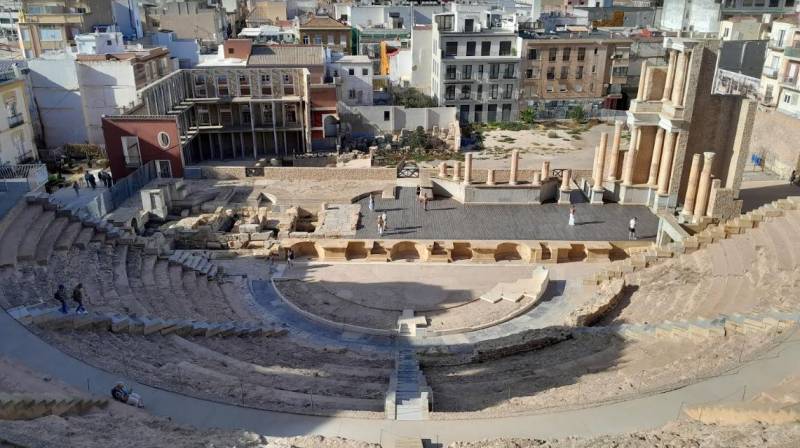
History, however, is something Cartagena is happily sharing with visitors, announcing extended
free-entry hours to its most cherished historical sites. If you’re in town on a Tuesday, you can now take advantage of the Roman Theatre Museum’s final two hours for free entry, depending on the season.
It’s a small part of a broader regional push to make culture more accessible in line with the Cultural Heritage Law. Additional historic gems like the Punic Wall, Castillo de la Concepción and the famous Fuerte de Navidad ‘Christmas Fort’ are also offering free slots to local and international history buffs, ensuring there’s ample opportunity to delve into Cartagena’s past without spending a cent.
In Mazarrón, the Guardia Civil are investigating a resident for some
rogue renovations on protected rural land. Allegedly, the landowner added solar panels, terraces and a concrete perimeter wall without the necessary permits, drawing the ire of the authorities.
Mazarrón’s zoning laws, which are meant to safeguard rural land and its natural heritage, didn’t mesh with the resident’s DIY dreams and local planners cracked down on the unauthorised building.
Just when it seemed the unexpected had run its course, a
mild earthquake struck central Murcia, clocking in at a modest 2.4 on the Richter scale. Although it was brief, the tremor added a little extra drama to a stormy week, particularly for those near the epicentre, including residents of Hacienda Riquelme, El Valle and Corvera.
Still reeling from the storm, this little quake was another small reminder that Mother Nature isn’t taking a break just yet, and that we are also on a fault line that can bring earthquakes at any time, ones that are larger than this. If that seems alarmist, just ask anyone who was in Lorca in 2011 if massive, destructive earthquakes can happen here.
The dry air mass drifted in from Africa, bringing with it a cocktail of nasty PM10 and PM2.5 particles. Lorca and Cartagena were hit particularly hard, with readings well above safe limits, prompting Cartagena to activate level 1 preventive measures.
While it may have passed into second place on everyone’s radar given the storm damage, the fact remains that officials have been recommending everyone cut back on energy usage, to use public transport and to stay indoors where possible during these episodes of calima.
Don’t want to scare you. I’m just saying it’s a reality that there is more than drought and flooding to be aware of when you live in Murcia.
Now, this is normally where we tell you about a couple of things that are happening in Murcia in the coming days, but remember that many events and celebrations that were planned by Town Halls and official government bodies have been cancelled this weekend as a mark of respect.
Our events diary is below as usual, but if you are planning to attend an event this weekend, you would be well advised to contact the organiser directly to check whether or not it is still going ahead.
Spain
So, although most of the Halloween events organised by town councils have now been cancelled out of respect for the victims of the storms and their families, Spain is still heading into a long weekend. As usual, this means lots of businesses will be closed, including the supermarkets, although
several will remain open, even if for just a few hours, on Friday November 1, so you can still grab the essentials you need.
The opening hours will vary from town to town though, so it’s best to check the website of your local store to make sure.
Here’s a breakdown of the opening hours for some of the major supermarket chains in Spain:
- Mercadona: The Valencian chain Mercadona usually closes during the holidays. However, in some areas, especially the tourist hot spots, stores will open for reduced hours, until 3pm. To obtain exact information about the opening hours of your nearest supermarket, we recommend using their handy store finder.
- Lidl: Lidl has opted to keep some of its supermarkets open on public holidays, albeit at different times. Many of the German chain’s stores will open from 10am and close at 10pm, so it's worth checking the website to confirm the hours of each location.
- Carrefour: Carrefour operates in Spain with different store formats (Market, Express, 24 hours), so its opening hours vary depending on the location and type of establishment. Some of its shops will open between 10am and 10pm, while others will remain closed. Customers of the French chain can check the exact opening hours of each store with the Carrefour search engine.
- El Corte Inglés: On November 1, El Corte Inglés will open some of its stores in major cities such as Madrid, Sevilla and Valencia, between 11am and 10pm. As always, it is advisable to check on its official website if your local store will be available during these hours.
- Supercor: Supercor, part of the El Corte Inglés group, will maintain its usual opening hours on public holidays, from 9am to 10pm, although some stores won’t open until 10am. To find out the opening hours of each supermarket, you can check the Supercor search engine.
- Aldi: Meanwhile, the German chain Aldi will open some of its stores on November 1, with opening hours usually from 10am to 10pm. Since not all of its stores will be operational, it is recommended to check the opening hours on the Aldi website.
- Día: The Spanish chain Día will maintain its usual opening hours in most of its stores, from 9am to 9.30pm, although this will again depend on the location of each store. Customers can check the specific opening hours of their local supermarket through the Día search engine.
- Alcampo: In the case of Alcampo, the opening hours will depend on each area, as some will open during reduced holiday hours, while others will remain closed. Users can access their store finder to confirm the opening hours of their nearest establishment.
The industrial action, led by major unions CCOO and UGT, will bring intercity and city buses, school transport and other passenger services to a grinding halt.
The strike was initially expected to include 300,000 other transport workers, but thankfully lorry drivers have been excluded following recent agreements in the freight and health transport sectors.
However, the bus drivers are determined to push through with their demands, and the strike is scheduled to continue on November 11, 28 and 29, and on December 5 and 9. If no agreement is reached, the strike could become indefinite starting December 23.
As further strike action looms, the Organisation of Consumers and Users (OCU) has issued a statement reminding passengers of their rights.
If your bus journey is impacted, you can
claim a refund of the ticket price or compensation in the form of credit. Additionally, if the journey was long distance, you can claim compensation that varies depending on the delay suffered, ranging from 50% to 100% of the original ticket price.
Furthermore, if you’ve missed a connection to another means of transport (a flight or train journey, for instance) or have lost your reserved accommodation due to the industrial action, you can also claim compensation.
The OCU recommends keeping any documents that prove your connection or accommodation reservation, and addressing your complaint to the transport company within three months of the strike. If the response is not forthcoming or is unsatisfactory, you can contact the land transport arbitration boards, which are dependent on the Ministry of Transport and are present in all autonomous communities throughout Spain.
Anyone looking for a long-term house or apartment to rent in Spain will know that prices have gone through the roof across the country. Likewise, those searching for a new home to buy are having little luck. The property market is a volatile and complicated beast, but the situation has certainly worsened in the last couple of years, driven by the almost worldwide cost of living crisis.
Here in Spain, we’re facing a
housing shortage of epic proportions with a population growth rate that's rapidly outpacing the construction of new homes. This is hardly surprising given that Spain is the country in Europe whose population has grown the most over the past year, booming by 525,000 new inhabitants, according to Eurostat data.
According to the National Institute of Statistics (INE), there were 19.3 million households in Spain as of July 1 this year, an increase of 130,300 compared to 2023. However, the number of new homes being built is not keeping pace. In 2023, only 80,473 homes were completed, a far cry from the 280,000 families that are expected to be formed each year over the next decade.
Worryingly, the stats show that if this trend continues as expected, Spain’s housing crisis could quickly escalate to a homelessness crisis.
In fact, the Bank of Spain estimates that the country will face a staggering deficit of nearly 500,000 homes by 2025.
As usual, it’s not holiday home prospectors or the wealthy that are bearing the brunt, but rather low-income families and young first-time buyers. In the Region of Murcia, the VPO (Vivienda de Protección Oficial) model, which aims to provide affordable housing to low-income families, has been
pretty stagnant since 2014. A mere 344 VPO homes have been built in the Region during this time, a far cry from the 775 units constructed in 2012 alone.
If the 2024 trend continues for the remainder of the year, it means that Murcia won’t have built or converted one single unit of public housing.
This alarming trend is not an isolated issue, but rather a symptom of a broader national crisis.
While the Spanish government is implementing tax breaks and bonus schemes to try and make building more attractive to developers, they are also attempting to
improve the day-to-day financial situation of the most vulnerable. One of the groups in focus is the unemployed, and as of November 1, the State Public Employment Service (SEPE) will be replacing two existing benefits, the family assistance and the subsidy for people over 45, with a new scheme called the ‘subsidy for exhaustion of contributory benefits’.
Under the new system, workers who have exhausted their contributory unemployment benefit will be eligible for a variable amount and duration of aid, depending on their age and the amount of benefits they have already received. For those under 45 years of age, they will need to have exhausted at least 360 days of unemployment benefits to receive a six-month subsidy.
Those over 45 years of age without family dependents will be able to access the same benefit if they have consumed at least 120 days of benefits. Unemployed people with family responsibilities, regardless of their age, will be able to access a subsidy of up to 24 months if they have claimed at least 120 days of benefits.
The amount of the subsidy will also change, with beneficiaries receiving 95% of the Public Indicator of Multiple Effects Income (IPREM) for the first six months, 90% for the next six months and 80% thereafter.
This means that the maximum amount of the subsidy will be 570 euros per month for the first six months, 540 euros for the next six months, and 480 euros thereafter.
Additionally, the new system will eliminate partial benefits, which were previously paid to part-time workers in proportion to the hours they worked. Under the new system, all beneficiaries will receive the full amount of the subsidy, regardless of the type of work day or employment contract they had.
Alicante

The Costa Blanca just got a whole lot more futuristic as the Climia Benidorm Hotel welcomes a brand-new fleet of
butler robots to its team.
Meet the Beer Robot, the star of the show. This clever machine has been specifically designed to pour the perfect pint, complete with just the right amount of foam and at the ideal temperature. It’s like having your own personal bartender, minus the tips and awkward small talk.
But the Beer Robot isn’t the only new recruit. There’s also a robot at reception who speaks 30 languages and can dish out info on the hotel and local area.
And if you’re feeling hungry, don’t worry – there’s a robot waiter on hand to take your order and deliver your food. This bright bot can carry up to 60 kilos in weight, so you can order as many snacks as you like.
But what about the rooms? Believe it or not, the robots have got that covered too. There’s a J-40 Cleaning bot that can sweep, mop, wipe and even wash the carpets.
The robots were designed by Alicante-based company Bumerania, and their CEO Isidro Fernández says they’re not here to replace the human staff.
“They are there to help workers and improve efficiency to optimise resources and improve the customer experience as well as protecting the health of staff members, like preventing back pain,” he said.
The hotel has also debuted its interactive table, which can be used to place orders, estimate when a drink will be finished and provide real-time travel information.
There was some exciting news for Alicante drivers this week with the announcement that the long-awaited project to add a third lane to the A-7 motorway between Orihuela and Crevillent has
officially kicked off.
This massive 86.9-million-euro project is expected to be completed by 2029 and will bring a sigh of relief to commuters and residents who have been dealing with congested roads for far too long.
The work has already begun and the expansion aims to improve traffic conditions and road safety on one of the busiest stretches in the province. With thousands of trucks and cars using this route every day, the new third lane will be a game-changer for those who rely on the A-7 for their daily commutes.
The new lane will also connect with the logistics centres in the San Isidro industrial estate and in Murcia, making it a vital artery for the region's economy.
The good news is that the impact on traffic is expected to be minimal during the initial phase, as the works will be carried out outside the current route of the motorway.
The new third lane will be built on a 3.50-metre platform, with a 2.50-metre right shoulder and a 1.60-metre outer verge. The project also includes several safety features, such as a vehicle containment system to prevent heavy vehicles from entering the carriageway in the opposite direction.
And to minimise the impact on nearby urbanisations, the project includes noise protection measures, such as sound barriers and acoustic screens. The median strip will also be fitted with a containment system, and the space between the inner hard shoulders will be designed to ensure proper drainage and prevent flooding.
For example, 17 towns in Alicante now have expat majorities, with Llíber’s population being 64% foreign-born. Expats, especially Britons, contribute substantially to local economies, predominantly in tourism and services. However, many expats live in properties sold as legal but now deemed illegal, leading to complex residency issues and bureaucratic hurdles.
And yet, despite expats’ economic importance, they lack meaningful political representation. In areas like Llíber, for instance, crucial roles such as municipal technicians, are often filled by individuals who don’t speak English, ignoring the linguistic needs of English-speaking residents.
This marginalisation of the expatriate community underscores a pressing need for political inclusion, especially in planning and public administration, to address historical injustices faced by the expat community.
Andalucía
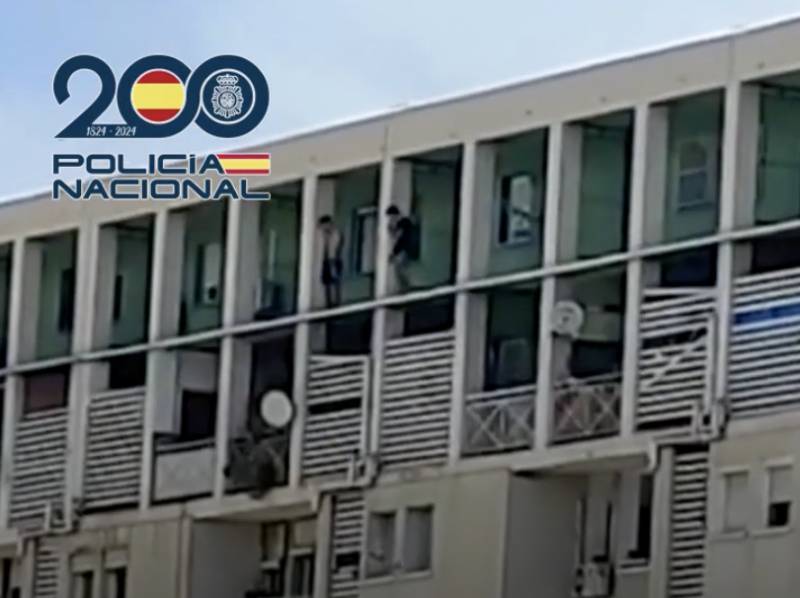
Two brothers in Málaga
went to dizzying heights to evade the law recently. Wanted by the National Police for a series of violent robberies, these siblings didn’t hold back in their escape attempt, scaling the façade of a building in a desperate bid to avoid capture.
The brothers, now behind bars thanks to the police’s persistence, had been leading a somewhat nomadic life around Málaga’s Botanical Garden and the Limonero dam, taking shelter in different rural properties.
The most high-profile escapade of their alleged two-year crime spree, which was peppered with intimidation, violence and the odd vehicle break-in, happened last spring when they attacked two Ukrainian hikers. The women, cornered by the suspects, had to make a frantic dash into the reservoir for safety and were later hospitalised with injuries.
In their attempt to dodge arrest, the brothers weren’t just laying low but were practically invisible, navigating foot-only paths and relying on vigilant relatives to keep police off their trail. The operation to track them down involved agents from the Homicide Group and Northern District Police Station, who secured an entry warrant for the family home of the suspects.
Finally, after a tense operation last week, police swooped in, arresting both brothers. With eleven separate legal claims to their names, the pair now await justice, cooling their heels in provisional detention.
We finish this week on a positive note, with something calmer and more upbeat over in Granada, where you enjoy an educational and awe-inspiring visit that is perfect for anyone curious about the natural world.
The
Science Park (Parque de las Ciencias) in Granada capital isn’t just a museum; it’s a sprawling, interactive playground for both kids and adults that lets you touch, explore and even play your way through science. With a butterfly house, aquarium and planetarium, there’s no shortage of immersive attractions.
Perhaps the most popular spot is the BioDomo, a lush, rainforest-like environment where you can stroll among toucans, monkeys and other animals, none of whom are restricted by glass. A hit with families, the BioDomo even has fish, sharks and alligators to gawk at, making it more like a miniature jungle than your typical museum exhibit.
There is also a planetarium where families can lose themselves in the stars in cinema-style comfort, and in the outside area a birds of prey show that brings majestic creatures soaring above the crowd, there’s plenty to keep little ones wide-eyed. The large outdoor space offers playgrounds, a maze and even a tower with impressive views over Granada, while the museum’s café is on hand for those much-needed coffee breaks.
A highly recommendable visit for adults, with or without children, if you ever find yourself in Granada for the day.
You may have missed…
- La Manga scuba diver discovers 200-year-old shipwreck.
Murcia history just got a new artefact after an amateur diver swimming off the coast of La Manga del Mar Menor made an incredible discovery that no one knew was there before...
- Foreign tourism in Murcia is growing faster than anywhere else in Spain.
The Region of Murcia recorded a year-on-year increase of 20.7% in international tourists between January and September, making it the autonomous community in which foreign tourism grew the most in this period.
- Judge forces Spanish golf course to plant trees to prevent balls hitting neighbouring houses.
The company that owns the Altorreal golf course in Molina de Segura has been forced to take measures to prevent balls fired by its players from continuing to fall into neighbouring houses.
- Flu season arrives in Spain: When should you get vaccinated?
We’ve learned a lot from the pandemic about the importance of preventing the transmission of respiratory infections with vaccines. Every year, new immunisations are developed to protect us against the most common strains of influenza, so when is the best time to get vaccinated?
- The 5 easiest traffic fines in Spain to get out of.
Did you know? It’s actually possible to wiggle your way out of some potentially pricey sanctions in Spain…
That’s the end of our Friday bulletin, but we’ll continue to keep you updated on our website and Facebook pages.
Stay safe out there x x


 Spanish News Today
Spanish News Today
 Alicante Today
Alicante Today
 Andalucia Today
Andalucia Today
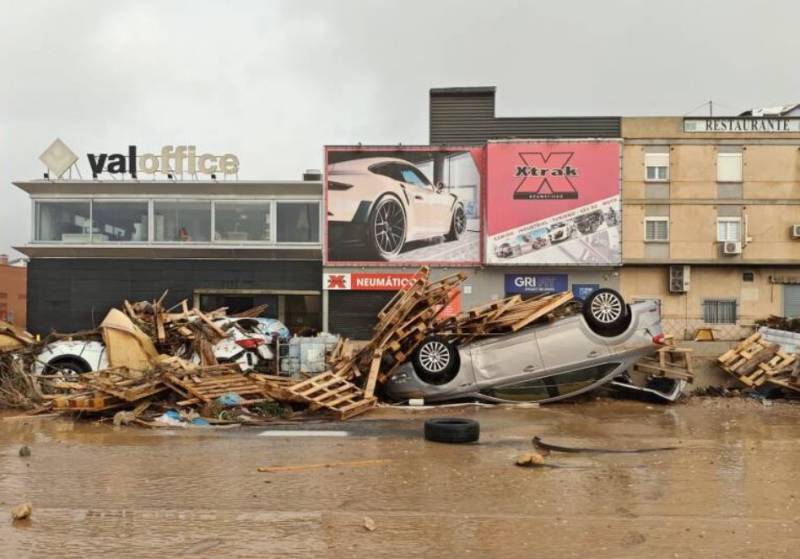
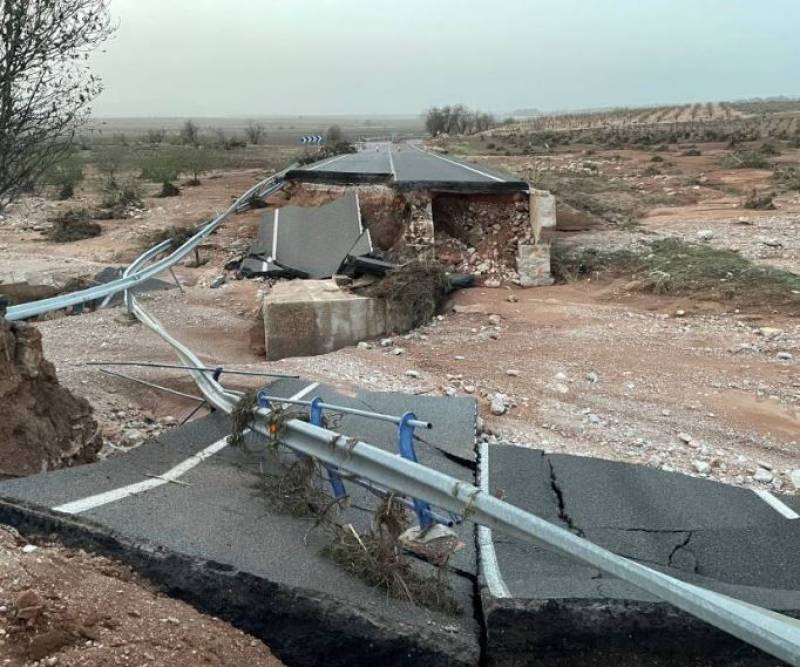
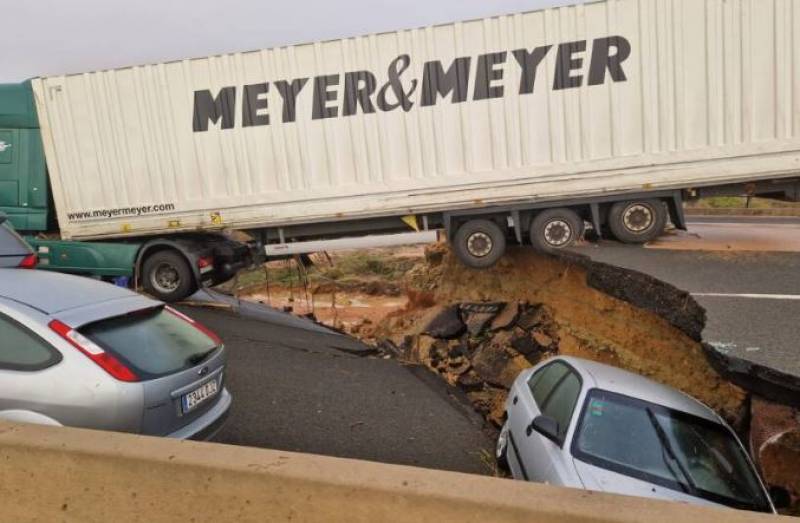
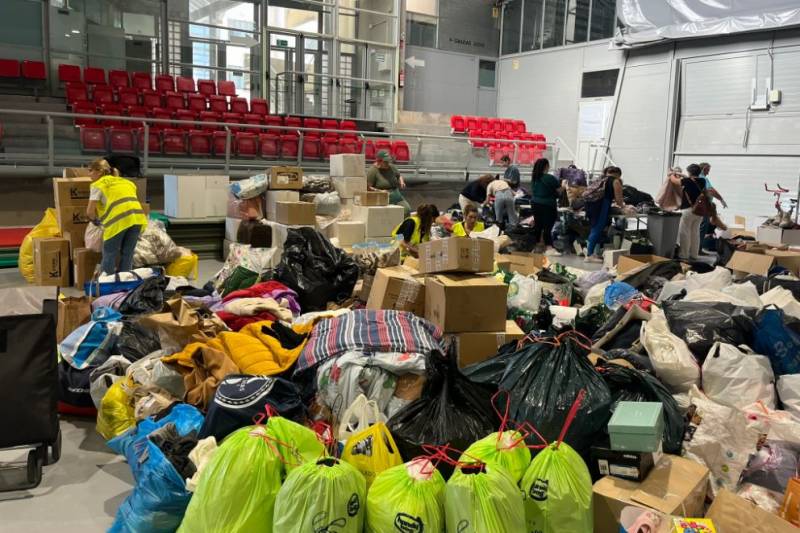
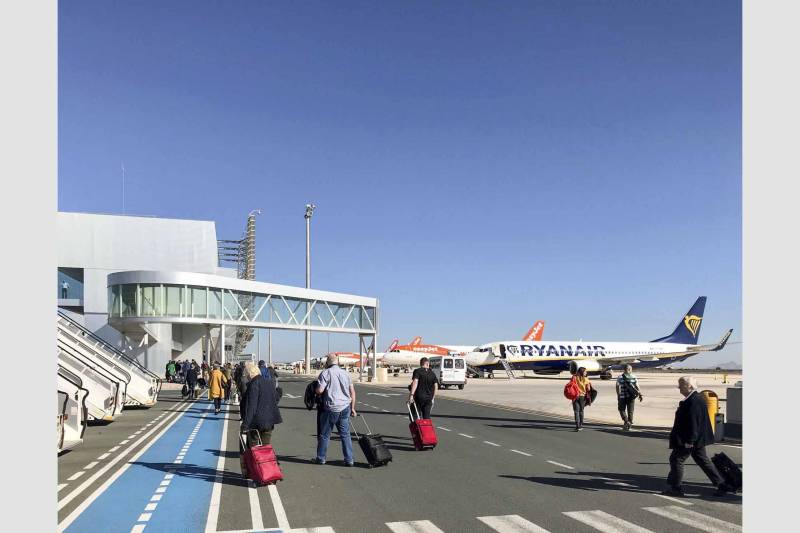 Away from the death and destruction, there was some news this week about Murcia Airport. Aena, Spain’s airport operator, has rolled out a new incentive plan aimed at boosting air traffic in smaller regional airports like Corvera.
Away from the death and destruction, there was some news this week about Murcia Airport. Aena, Spain’s airport operator, has rolled out a new incentive plan aimed at boosting air traffic in smaller regional airports like Corvera. History, however, is something Cartagena is happily sharing with visitors, announcing extended free-entry hours to its most cherished historical sites. If you’re in town on a Tuesday, you can now take advantage of the Roman Theatre Museum’s final two hours for free entry, depending on the season.
History, however, is something Cartagena is happily sharing with visitors, announcing extended free-entry hours to its most cherished historical sites. If you’re in town on a Tuesday, you can now take advantage of the Roman Theatre Museum’s final two hours for free entry, depending on the season.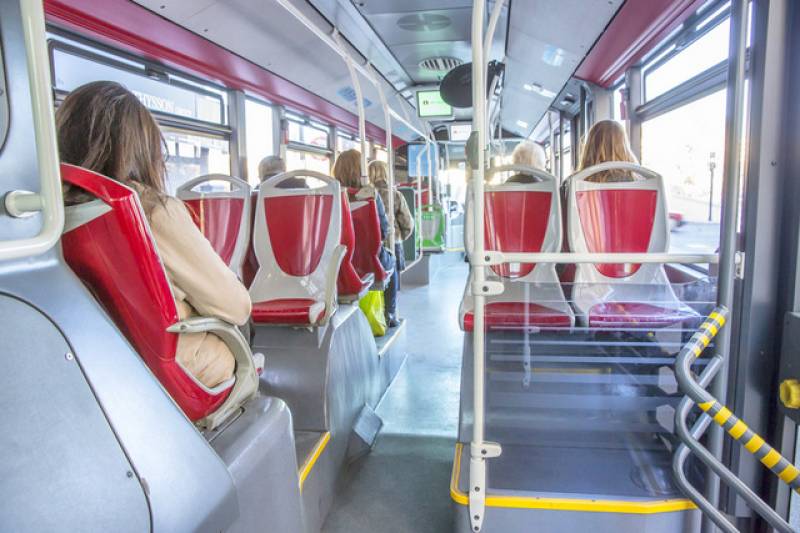

 The Costa Blanca just got a whole lot more futuristic as the Climia Benidorm Hotel welcomes a brand-new fleet of butler robots to its team.
The Costa Blanca just got a whole lot more futuristic as the Climia Benidorm Hotel welcomes a brand-new fleet of butler robots to its team.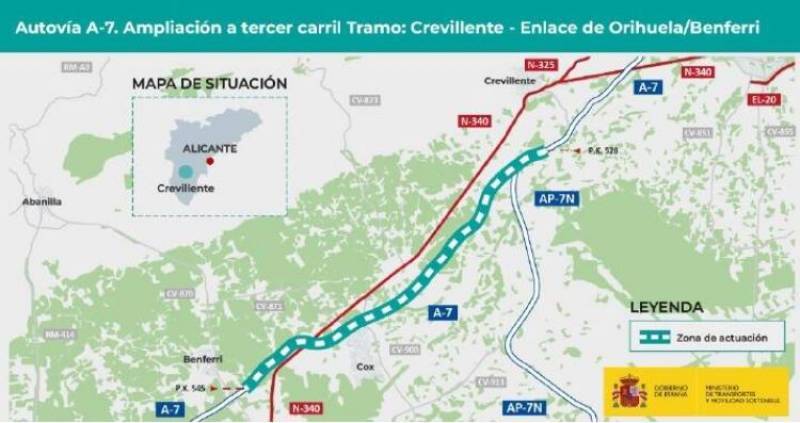
 Two brothers in Málaga went to dizzying heights to evade the law recently. Wanted by the National Police for a series of violent robberies, these siblings didn’t hold back in their escape attempt, scaling the façade of a building in a desperate bid to avoid capture.
Two brothers in Málaga went to dizzying heights to evade the law recently. Wanted by the National Police for a series of violent robberies, these siblings didn’t hold back in their escape attempt, scaling the façade of a building in a desperate bid to avoid capture.




















